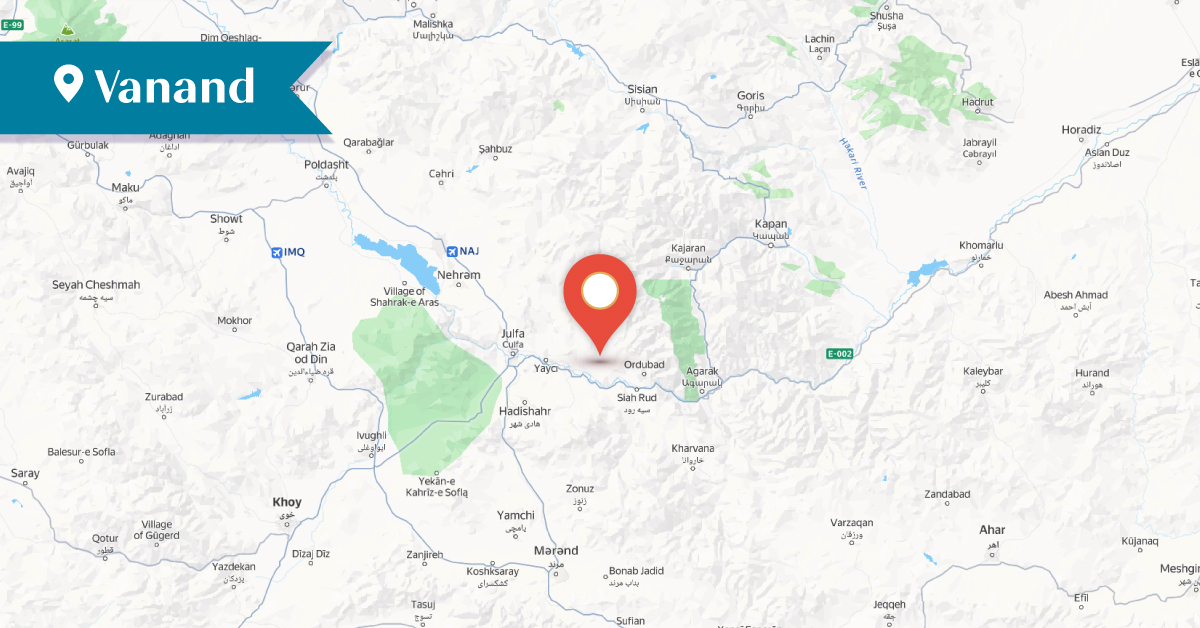2025
2025
2025-08-21

In the Goghtn district of Greater Armenia’s Vaspurakan province, to the west of Agulis, stretched the Vanand Valley (Vanandadzor), where the notable villages of Vanand, Trunis, and Dasta (Dastak) were located. The valley was often referred to by the names of these villages—Vanand Valley, Trunis Valley, or Dasta Valley. [1]
Historic Vanand stood out for its beautiful nature and fertile lands. Throughout the Middle Ages, Vanand[2] was one of the developed Armenian villages, whose population was mainly engaged in agriculture and gardening.
According to tradition, the Monastery of St. Thomas (Surb Tovma) in Vanand was founded in the 1st century AD by the Apostle Bartholomew. According to the medieval Armenian historian Stepanos Orbelyan, in the mid-1st century the Apostle Bartholomew built a chapel over the grave of his disciple Lusik, who had died in Vanand, destroyed the local pagan temple, and in its place erected the Church of Surb Tovma.[3]
The monastery was a three-nave basilica with its entrance on the western façade. In the 17th century, Matteos Vanandetsi renovated it. The western façade of St. Tovma contained stone inscriptions, wall paintings, sculpted images, and ornamental carvings. Today the monastery lies in ruins.
As for the Chapel of St. Lusik, it was restored in the 12th–13th centuries and again in the 17th century. At present, the chapel is also ruined.
In the southwestern part of Vanand stood the Monastery of the Holy Cross, also known as “Andzrevaber”, which was built in 1457 by Bishop Petros of Goghtn.[4] The monastery was renovated in the 17th century. St. Cross contained inscriptions, wall paintings, ornamental carvings, auxiliary buildings, and surrounding walls. Today, it too lies in ruins.
Vanand was also home to the Church of Surb Hovhannes (St. John), built in the Middle Ages and mentioned in records from 1666. At present, the church is in ruins.
Several prominent figures of Armenian culture were natives of Vanand: Vahan Goghtnetsi, and the Vanandetsi family, who became particularly distinguished in Armenian publishing during the late Middle Ages. Among them were Father Tovmas Vanandetsi of the Monastery of the Holy Cross in Goghtn, Matteos Vanandetsi, and Ghukas and Mikayel Nurijanyan-Vanandetsi. The latter worked in Amsterdam in the late 17th and early 18th centuries, publishing numerous works.
In 1695, Tovmas Vanandetsi published Movses Khorenatsi’s History of the Armenians in Amsterdam, and in 1702 he founded a printing house in Halle, Germany. [5] In the same year, the Vanandetsis also printed in Amsterdam the Universal Atlas (Hamat’arats Ashkharhats’uyts) and collections of hymns (Sharakanots); in total, their publications exceeded 20 titles.[6]
From the 19th century onward, the village began to lose its Armenian population, and Shia Muslims settled in Vanand.
Today, Vanand village is located in the Ordubad district of the Nakhiյevan Autonomous Republic and is inhabited by Azerbaijanis.
Bibliography
Ghevond Alishan, Sisakan, Venice, 1893.
Yervand Lalayan, Nakhijevan Province, Book XI, 1904.
Nakhijevan Atlas, Research on Armenian Architecture Foundation, Yerevan, 2012.
T. Kh. Hakobyan, St. T. Melik-Bakhshyan, H. Kh. Barseghyan, Dictionary of Toponyms of Armenia and Adjacent Regions, Vol. 4, Yerevan, 1998.
Stepanos Orbelian, History of Syunik, Yerevan, 1986.
A. Ayvazyan, The Armenian Monuments of the Nakhijevan ASSR: A Comprehensive List, Yerevan, 1986.
Armenian Soviet Encyclopedia, volume 11, Yerevan, 1985.
[1] Yervand Lalayan, Nakhijevan Province, Book XI, 1904, p. 314
[2] In Azerbaijani - Vənənd։
[3] Stepanos Orbelian, History of Syunik, Yerevan, 1986, p. 77.
[4] Ghevond Alishan, Sisakan, Venice, 1893, p. 340.
[5] T. Kh. Hakobyan, St. T. Melik-Bakhshyan, H. Kh. Barseghyan, Dictionary of Toponyms of Armenia and Adjacent Regions, Vol. 4, Yerevan, 1998, p. 753.
[6] Armenian Soviet Encyclopedia, volume 11, Yerevan, 1985, p. 269